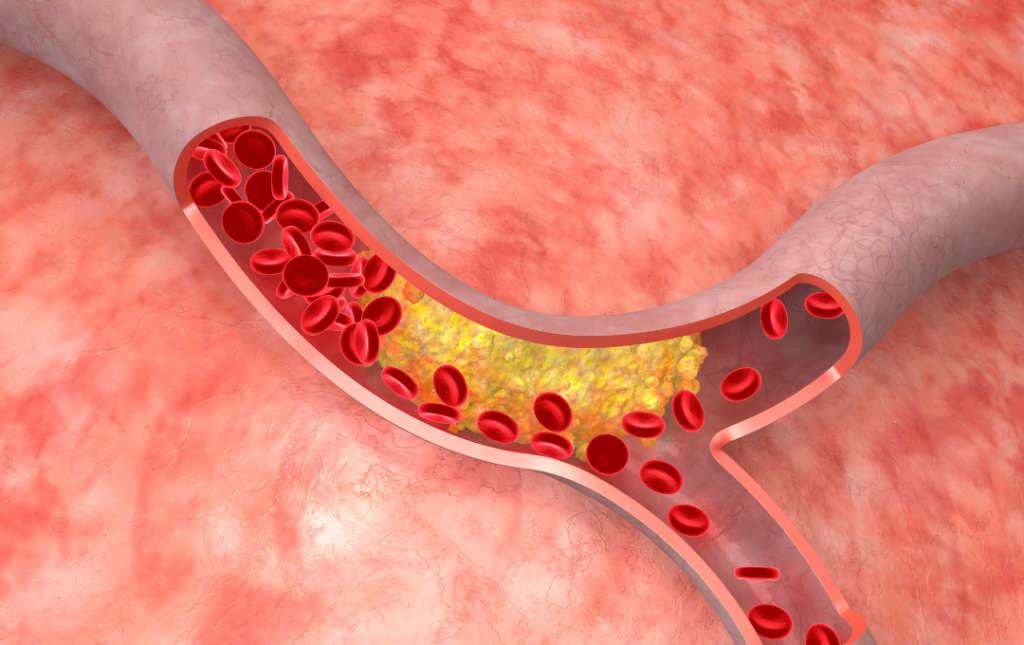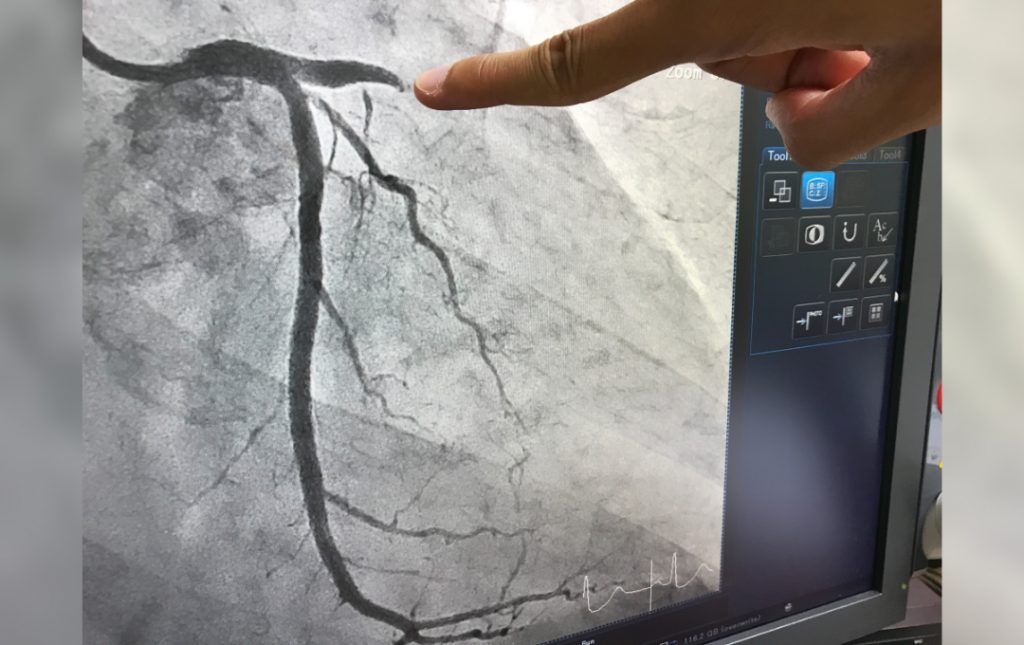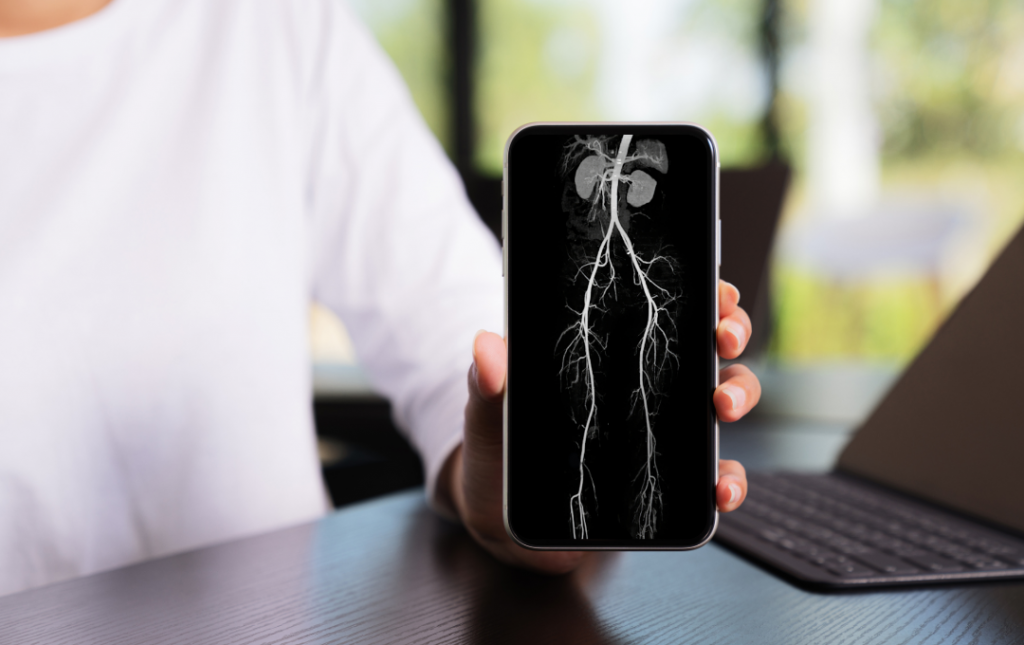If you were recently diagnosed with peripheral artery disease (PAD), your doctor may have recommended a procedure called an angiogram. Angiogram refers to a medical imaging procedure that’s similar to an X-ray, but it identifies blockages in your arteries. Over a period of time, the arteries in the legs and heart can become narrow or blocked due to fatty deposits on the arterial walls. These fatty deposits can lead to a condition known as atherosclerosis, a common cause of PAD.
PAD patients may experience symptoms such as pain in their feet, legs, buttocks, or hips. They may also experience hair loss, discoloration, and shininess in the legs along with difficulty moving around. As the disease progresses, symptoms worsen, and patients are at an increased risk of life-threatening complications.
USA Vascular Centers’ team of vascular experts emphasize that early detection and treatment are key in avoiding complications of PAD. Angiograms are the first step in the treatment process. Read on to learn more about this procedure, why it is needed, and what’s involved in an angiogram. If you are experiencing symptoms, visit a vascular specialist as soon as possible.

Why Are Angiograms Important?
Angiograms not only help identify where blockages are but help note the extent of the blockage. As plaque continues clogging the arteries, the rest of your body is not getting enough oxygen- and nutrient-rich blood from the heart.
This can cause a lot of pain in the legs and lead to a condition called gangrene. Gangrene can increase your chance of getting the affected leg amputated. The National Institutes of Health reports that 60% of PAD patients who receive an amputation have a lower life expectancy. This can depend on other risk factors such as age and the type of amputation.
As X-ray images are taken during an angiogram, a vascular specialist can determine the severity of the arterial blockage(s). They will also determine the treatment you may need to reduce symptoms and lower your risks of complications such as amputation, heart attack, and stroke. That’s why it’s important to get tested for PAD and treated early if you experience symptoms or are at risk.
If you are worried about PAD, take USA Vascular Centers’ risk assessment quiz to find out if you need to schedule a consultation.

How Does an Angiogram Work?
During an angiogram, a vascular specialist may provide sedation before inserting a small catheter into a vein. Next, they will guide the catheter to the affected artery and inject a contrast dye that will make the arteries visible on the X-ray. Patients may feel flushed or have the urge to urinate as this happens. It’s recommended to drink lots of water after your procedure to flush out the dye.
Depending on the severity of the blockage, the specialist will recommend what is needed to remove it. In some cases, angiograms are immediately followed by treatment. In more severe cases, the patient will need an artery bypass to create a new route for blood to reach the legs and feet.
Minimally Invasive Procedures Post-Angiogram
There are a few minimally invasive treatments that may happen immediately after an angiogram. These include angioplasty, stent placement, atherectomy, or a combination of these treatments.
During an angioplasty, a catheter is placed alongside a long, thin guidewire. A special device equipped with an inflatable balloon is then placed across the blockage. The balloon inflates when it reaches the blockage in order to compress the plaque. It then deflates and is carefully removed while keeping the wire in place across the area to be treated.
Stent placements are usually used in conjunction with angioplasty (known as stent angioplasty). A stent is a small mesh tube that will expand after it’s placed within the affected area. This will keep the arteries open to ensure better blood flow.
Atherectomy is sometimes performed prior to angioplasty or stent placements. The catheter will have a small blade or laser attached at the tip, which will physically remove the plaque.
If you have questions regarding angiograms, treatments, or what to do before these treatments, be sure to ask your vascular specialist during your consultation.

What Happens After an Angiogram
Most patients will experience a small bruise at the insertion site. Patients who receive treatment after their angiogram may have to stay for a couple hours to ensure there’s no bleeding at the insertion site and no complications. Complications such as an allergic reaction to the contrast dye are rare.
Your vascular specialist will provide you aftercare instructions, which may include the following:
- Avoid heavy lifting and strenuous activities for two days to prevent the risk of blood leakage at the insertion site.
- Drink lots of water to flush out the contrast dye, which is particularly important for people with kidney problems.
In addition to aftercare instructions, your vascular specialist may want to start ongoing care to further monitor your condition. This will include certain medications, lifestyle adjustments, and follow-up appointments.
Why Patients at USA Vascular Centers Benefit from Angiograms and Treatments
Choosing to get treatment for peripheral artery disease at USA Vascular Centers can benefit patients in a few ways. This can include:
- Instant insurance verification when patients call or schedule online
- Effective reduction in symptoms and risk of complications
- Slowed progression of PAD, boosted mobility, and better blood flow
There’s no need for stitches or a long recovery time because these procedures are minimally invasive. If you need help getting started on the path to a healthier life, call 888.773.2193 or use USA Vascular Centers’ online scheduling tool.
Frequently Asked Questions
Is an angiogram a major surgery?
An angiogram is not a major surgery. It’s a minimally invasive procedure that helps doctors determine whether treatments are needed to remove the blockage.
Is it painful to have an angiogram?
The chance of experiencing pain during an angiogram is minimal. You may receive a local anesthetic or light sedation so that you don’t feel much during the procedure. Most patients feel as if they have to pee due to the contrast dye the doctor injects to see the arteries.
How much does an angiogram cost?
The cost of an angiogram depends on a patient’s insurance coverage. USA Vascular Centers accept most major insurance plans, including Medicare and some Medicaid plans.
How long does an angiogram take?
The average time range for an angiogram is between 30 minutes and two hours, according to the National Health Service. However, the severity of the blockage, especially if treatment follows an angiogram, can affect the time length.
Can an angiogram clear blockage?
Angiograms do not clear blockages in the arteries; they can only help identify where the blockage is. Minimally invasive treatments or artery bypass surgery can clear the blockage.

